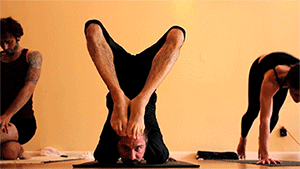
When you are diagnosed with diabetes mellitus, being physically active is one of the best things that you can do to your health. Decreasing overall sedentary lifestyle is one of the keys in managing diabetes mellitus. Exercise poses several health benefits particularly improving insulin sensitivity, promoting energy expenditure, building muscle, and being fit. Yet despite its scientifically accepted truth on keeping your sugar under control, many people are reluctant to engage in exercise.
Individuals with diabetes often experience dizziness, nausea, vomiting, difficulty of breathing, and even loss of consciousness during or after exercise. In this case, you may be experiencing hypoglycaemia, a state in which your blood glucose goes too low. Extensive exercise or wrong dosage of diabetes medications may lead to hypoglycemia. Therefore, the most common concern people have on diabetes and exercise is how to keep you blood glucose in balance.
It is important for a person with diabetes to consult his/her doctor when planning to engage in physical activities. In general, a mix of aerobic exercises (e.g. walking, jogging cycling), resistance trainings (e.g. exercises with free weights or resistant bands), and balance exercises (e.g. tai chi, yoga) are all beneficial to a person with diabetes. Structured lifestyle interventions that include at least 150 minutes per week of physical activity and healthy dietary habits can improve overall health.
When planning to exercise, it is suggested to first check your blood glucose. This is strongly advised for people under insulin treatment. According to Harvard Medical School, it is best to exercise one to three hours after eating a meal. At this time, your blood glucose will likely be high thus reducing your risk for hypoglycemia during exercise. Make sure that your blood glucose is between 90 and 250 mg/dL (5.0 and 13.9 mmol/L) prior to exercising. If your blood glucose is below 100 mg/dL (5.5 mmol/L), it is better to take a carbohydrate snack like fruits before moving. Checking after 30 minutes will also help you to assess whether you have a stable blood glucose. And if your blood glucose is 250 mg/dL (13.9 mmol/L) or above, it is strongly advisable not to perform exercise and first manage your high blood glucose through your doctor’s prescriptions.
It is also very important to start low and slow when beginning with your exercise regime. Intensity should be low while duration can be as less as 10 minutes. Increments may be based on your personal assessment. The important thing here is not to overwork yourself as it may do more harm than good. Also, listen to your body. If you feel any of the symptoms mentioned above, it is better to slow down, stop, and check for your blood sugar. This is where one or two pieces of candy becomes a handy savior! Take one if you must. Hypoglycemia can also occur hours after exercising.
Regular exercise is still widely-accepted to improve your blood glucose control. The key is to reduce your overall sedentary lifestyle. The American Diabetes Association recommends that three-minute or more of light activity such as walking, arm stretching, or leg extensions every 30-minutes of sedentary activity should improve your sugar. So go ahead and keep moving but remember: Be safe.

